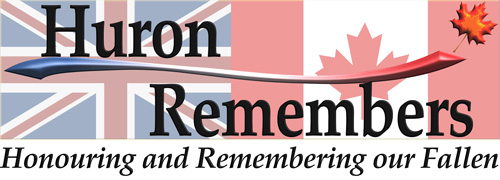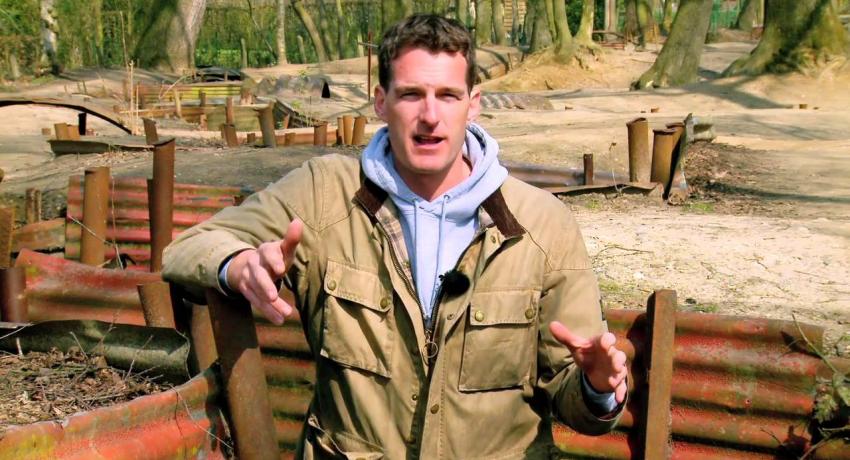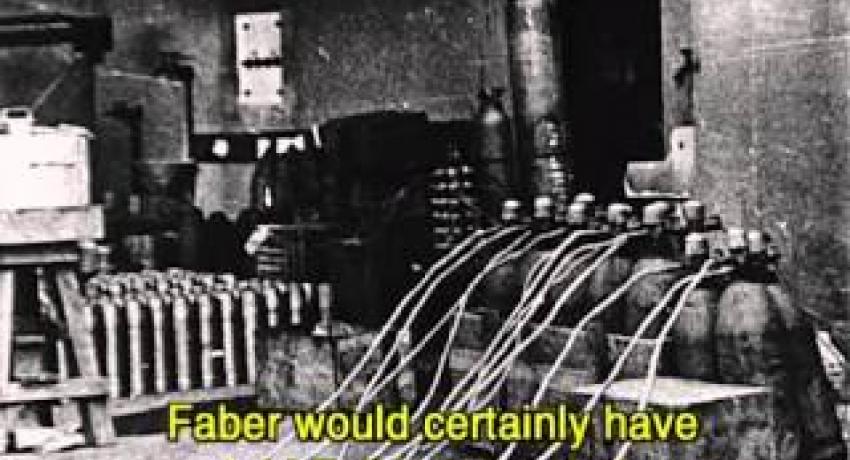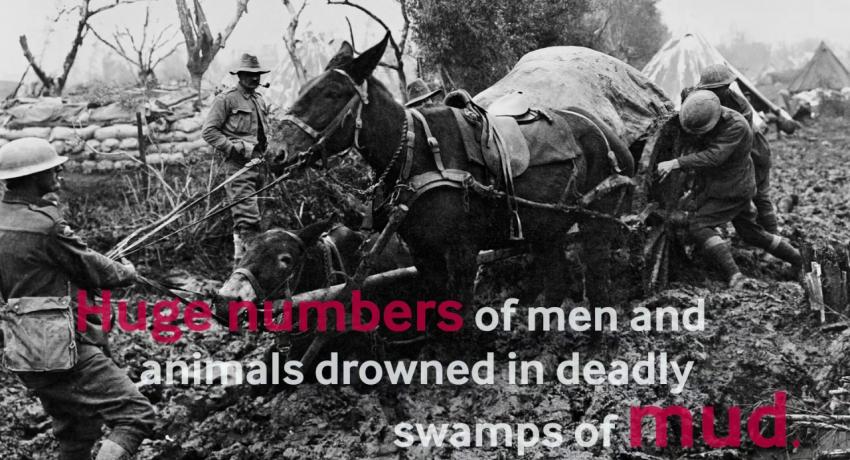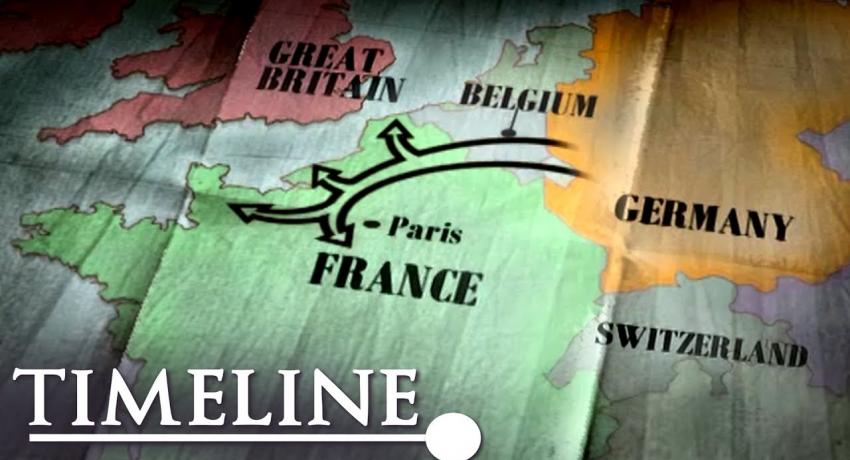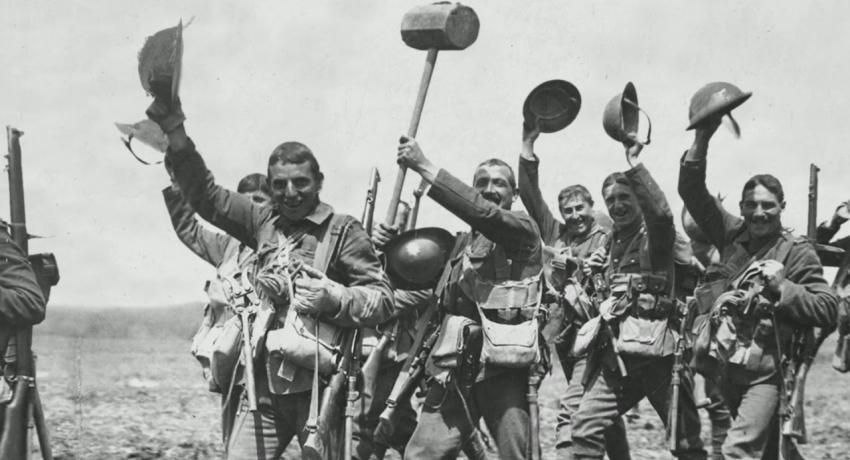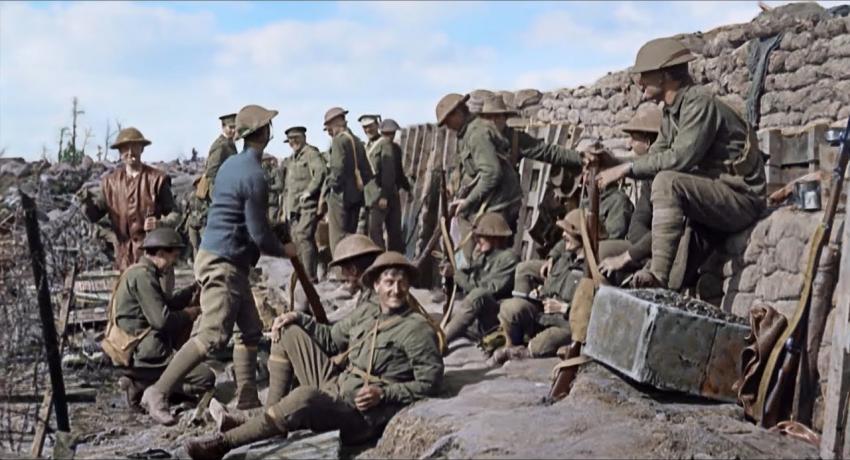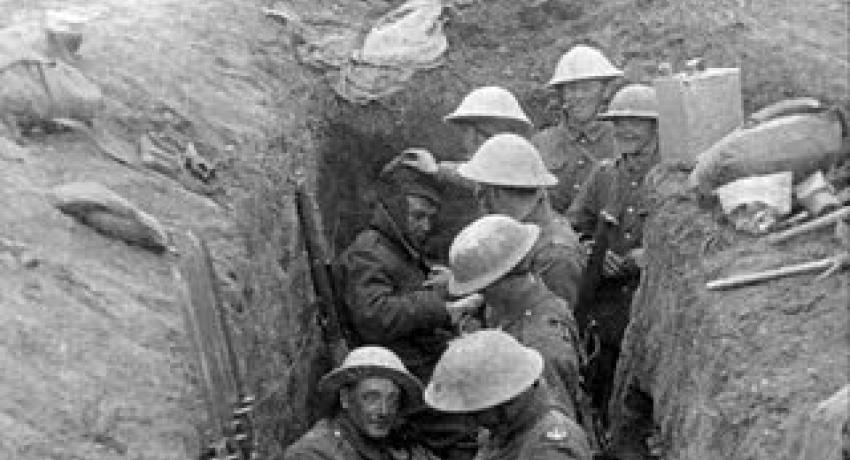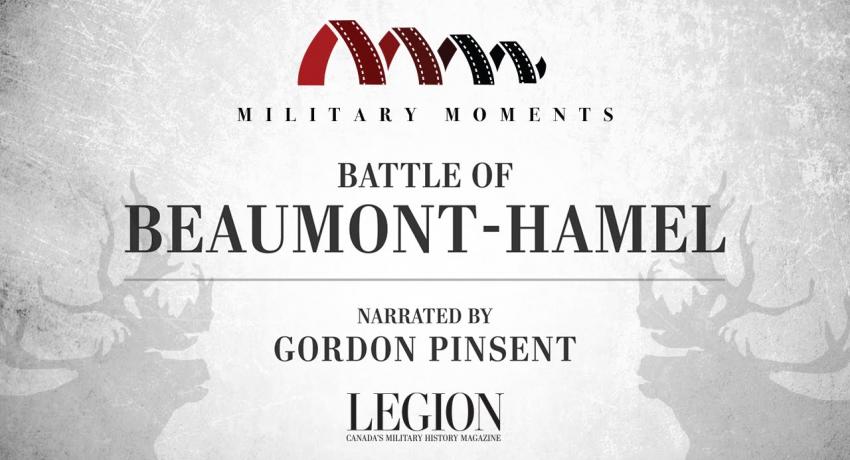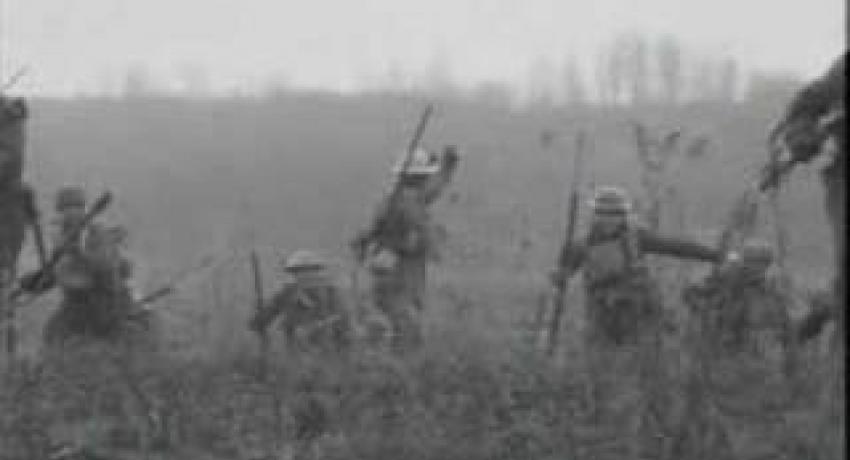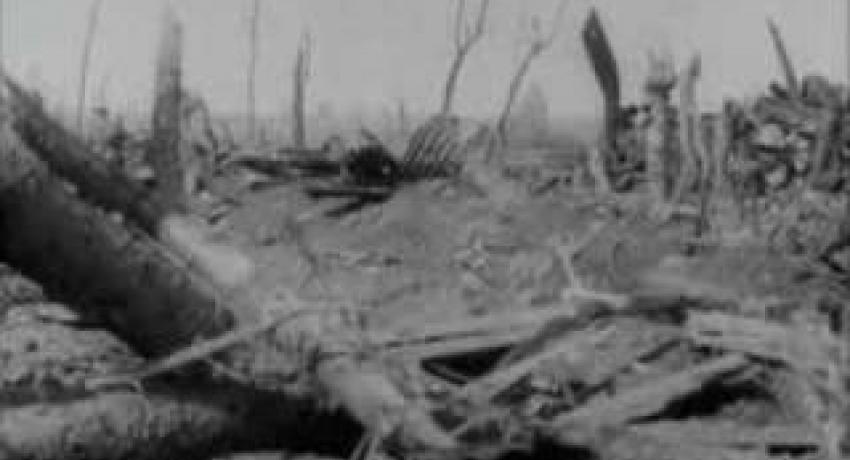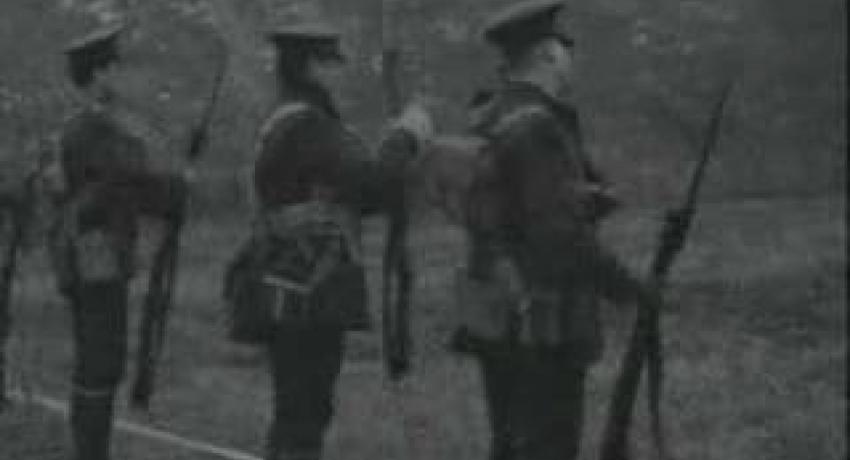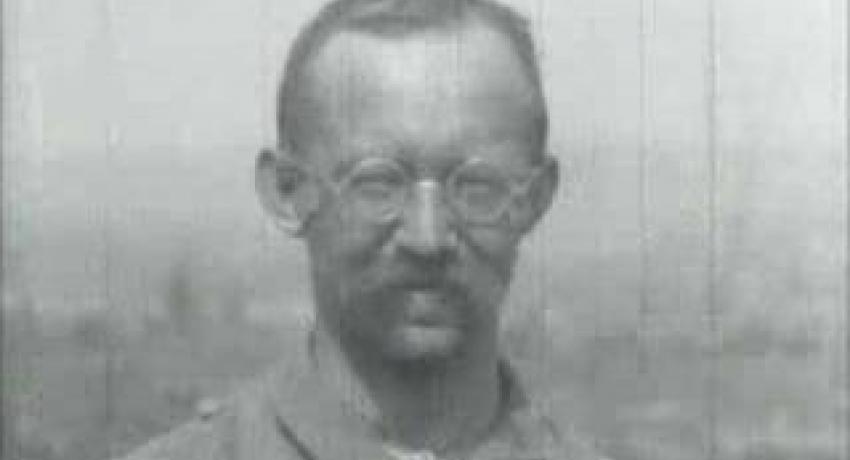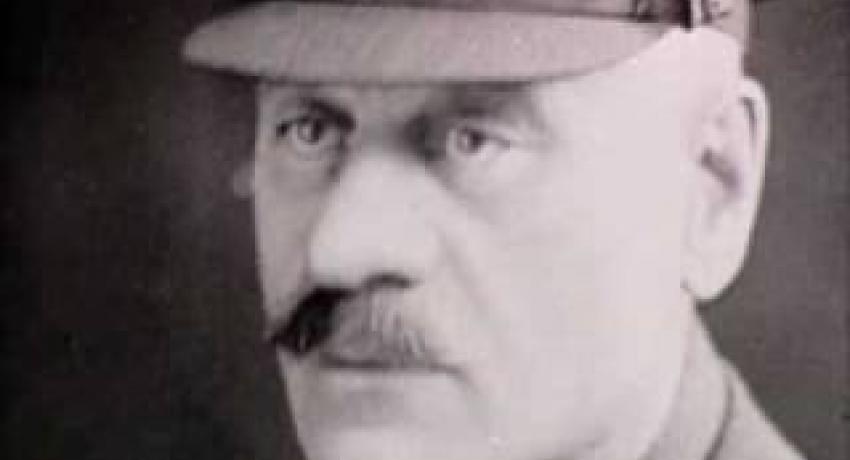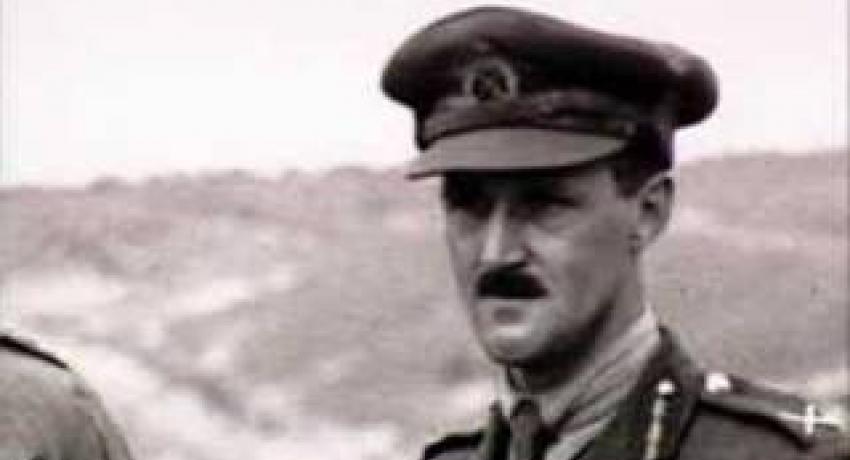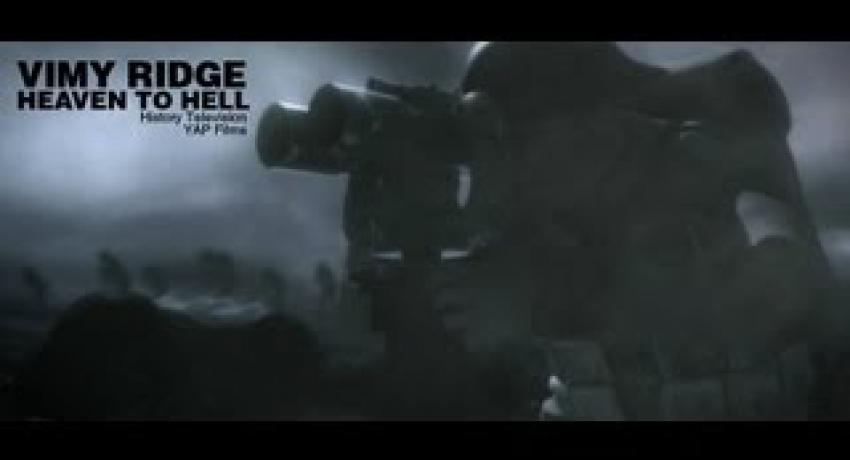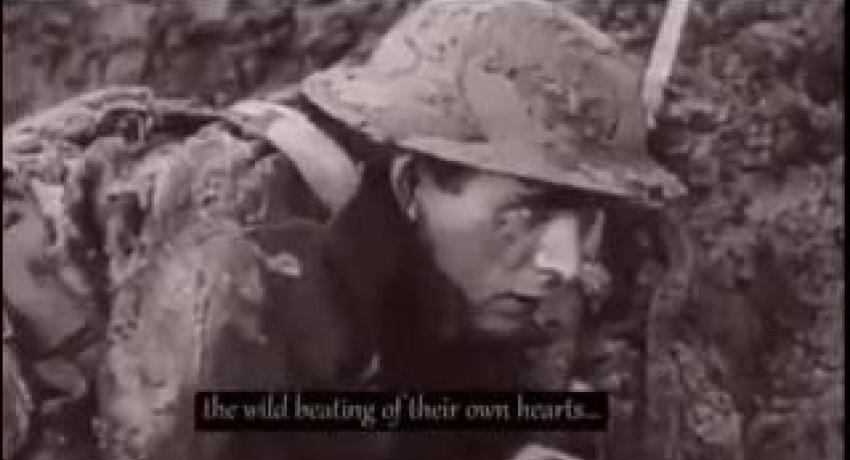HURON REMEMBERS
THE CANADIAN WORLD WAR I TIMELINE
1914
December 24th: Pvt. Herbert FRENCH
1915
THE YPRES SALIENT
During early part of April 1915, the Canadian First Division moved to the front lines in front of the city of Ypres and here the German forces held the high ground and could throw fire onto the Allied positions from the north, south and the east.
It was during the day of April 22nd the enemy fired an artillery barrage of poison gas and with the wind the gas moved over the French lines and their troops either fled or died and the result was a 4 mile wide hole in the Allied lines. The Germans advanced and were close to sweep in behind the Canadian trenches. Poor planning on the part of the enemy severely limited his advance to 2 miles at which time he dug in.
During the darkness hours of April 22-23 the Canadians worked to plug the gap and they mounted a counter-attack against the enemy in Kitchener’s Wood close to St. Julien. On the morning of April 23rd the Canadians attempted counter attacks but there was not much gained and casualties were heavy.
April 22-30: Lance Cpl. William PALMER
April 23rd: Pvt. Loftus Roy HERN; Pvt. David Charles WEIN
Then, on April 24th the enemy launched an attack and the enemy used poison gas again and this time the gas rolled over the Canadians. They had to deal with enemy artillery and machine gun fire, jammed Ross rifles, heavy fighting and they were gasping to breathe they were able to hold until help arrived.
April 24th: Pvt. Melvin BUNSTON; Lance Sgt. John Wesley REID
April 27th: Pvt. Harry Milton PHILCOX
April 28th: Pvt. Edward James MURCH
April 30th: Pvt. Henry Edwin ROSE
The Canadians proved their determination and toughness during these three days 2,000 Canadians died and 4,035 were wounded. This was their initiation.
FESTUBERT – May 15 – 27, 1915 GIVENCHY – June 15 – 16, 1915
The Canadians had suffered tremendously at Ypres and volunteers of the Canadian Cavalry Brigade helped bring their numbers up before moving south to the Allied offensives. The British had made attacks in French Flanders and were partially successful at Neuve Chapelle but very much bloodied and bruised at Aubers Ridge. The French had made an attack on Artois that was not very successful.
The Canadians joined the line at Festubert in May of 1915 and at Givenchy in June. The Canadians were able to achieve some of their objectives during both battles. However, the British Command and their strategy of frontal assaults against the enemy caused the casualty rate to be extreme. At Festubert in May the Canadians suffered 2,468 casualties and at Givenchy in June the Casualties were 400.
June 15th Private Arnold Clement BRENNER
THE CANADIAN CORPS
Canada’s First Contingent had set sail from Canada in October of 1914 and once in England and finished their training would become the 1st Canadian Infantry Division. The 2nd Canadian Division was formed from the men that sailed from Canada with the First Canadian Contingent. The Division was formed in May 1915 and they went overseas into France in September 1915.
Both Canadian Division had to deal with the upcoming winter that had them at the front between Ploegsteert Wood and St. Eloi in Belgium. Here they had to contend with trenches full of water, “trenchfoot”, pneumonia, colds, influenza, rats, lice and fleas.
Then, in December, the 3rd Canadian Division was formed in France.
July 15th Cpl. Chester Stuart MacDONALD; Pvt. Herbert Harrison MEEK
December 11th Cpl. John Foreman USHER
December 29th Sgt. William DARNELL
1916
INTRODUCTION TO THE SOMME
The fighting that would take place on the battlefields of the Somme was cursed from the beginning and before the Canadians became attached to that slaughter, they were part of local offensives in the southern portion of the Ypres Salient.
January 9th Pvt Arthur Ansell HART
January 11th Pvt. Thomas EDGAR
January 18th Major Charles Edward SALE
March 2nd Pvt. Harrison Cleveland McDONALD
BATTLE OF ST ELOI
March 27 – April 16, 1916
Here the 2nd Canadian Division was initiated on a battlefield that was full of water-filled mine craters and shell holes. The Canadians were wearing the new steel helmets for the first time. The battle was for six water logged mine craters that took place over a two week period. The fighting was confused, there was no cover, there were assaults and counter attacks. The Canadian casualties of men killed, men wounded, men missing and men becoming casualties numbered 1,373.
April 6th Pvt. Alfred Ernest STEELS
April 9th Pvt. Bernard Arthur WATMORE
April 10th Pvt. William SEWARD
April 28th Pvt. William MANNING
May 22nd Pvt. Homer Arthur CANTELON
THE BATTLE OF MOUNT SORREL
June 2 – 13, 1916
Here, at Mount Sorrel, the Allies were holding this position. On June 2nd, the Germans attacked and the artillery bombardment that came down on the Canadians and trenches were eliminated and the defenders were ravaged. Men and trees were catapulted into the air. The 3rd Canadian Division fought as best they could but could not stop the hordes of enemy from engulfing them. In the evening the enemy advance was stopped but Mount Sorrel along with Hills 61 and 62 were occupied by the enemy. On the morning of June 3rd, the Canadians counter-attacked without success. Three days later on June 6th the enemy exploded four mines along the Canadian front and attacked and captured Hooge on the Menin Road. This was the first action experienced by the 3rd Canadian Division.
June 2nd Lance Cpl. Alexander Duncan MacDiarmid
June 4th Pvt. Joseph Albert GORDON; Lance Cpl. James Scott HAYS
June 13th Pvt. James Spencer HEMSWORTH
The Canadians however were intent on taking back what had been lost. Planning was careful, and the Canadian artillery would support the 1st Canadian Division. There was a savage artillery barrage on the German forces and at 1:30 am on the morning of June 13th the attack went forward in the wind and rain. The 1st Division was rewarded as the planning had been successful and the high ground that had been lost on June 2nd was once again in the hands of the Canadians. The casualty count was high – 8,430 casualties.
THE SOMME
It seems that at this point in the war that the British Command knew nothing or cared little about planning well for an offensive or strategizing in an attempt to limit the lives that would be lost in the attacks. Every advance was a slaughter with very few achievements or successes.
In February of 1916, knowing how important Verdun was to the French, the Germans planned an offensive for this walled city. The enemy believed the French would fight and die for this city and the plan was to coax the French into a salient that was narrow and dangerous and then through his artillery destroy the French forces. This artillery barrage began on February 21st and for the next ten months artillery shells were thrown at one another as well as soldiers. During Christmas of 1916 the battle ended and the casualty count for both the French and Germans was 680,000 men with 250,000 men dying.
June 5th Pvt. Rupert Elwyn RIVERS
June 6th Sgt. Richard CUNNINGHAM; Pvt. William Ferguson DAVIDSON;
Pvt. Robert Bruce LOGAN
June 13th Pvt. Thomas Wilfred MONTGOMERY; Pvt. Percy George SYDER
BATTLE OF THE SOMME
July 1 – November 18, 1916
The situation in France and Belgium at this time was that it was a standoff on the battlefield. The front extended 620 miles and the fighting was taking place in the trenches across this front. In between the trenches of the Allies and the Germans was a treeless mass of ground void of any cover known as “no man’s land”.
Positions were strongly protected by trench mortars, artillery, machine guns and snipers. No side was able to make a breakthrough. However, the Allies were planning a push that they hoped would fracture the enemy lines. This was going to occur in northern France in the Somme River valley.
It began, and it was a disaster with 57,000 British and Commonwealth forces being killed, wounded, missing or becoming prisoners. There was never a major success nor a breakthrough and the bitter, bloody and cruel fighting continued and this was because of very inadequate leadership from the British Command.
During the 1916 summer, The Canadian Corps had been positioned in Belgium and in late August they began to shift their positions to near the French town of Courcelette. Here they began to encounter fierce enemy opposition and suffered 2,600 casualties. This was even before the advance they had been tasked with ever began.
July 27th Sapper William REDFERN
July 31st Pvt. Samuel DARNELL
August 24th Pvt. James Johnston HUTCHINSON
September 3rd Pvt. Joseph HOLLAND
September 4th Pvt. Patrick CRAMPSEY; Pvt. William John WHITE
September 6th Pvt. Horace Morgan Cayley HAMILTON
September 7th Pvt. Arthur LAVIS
September 8th Pvt. Arthur William McMATH; Pvt. Charles Edward McMILLAN
September 9th Pvt. Harvey I. CURRIE
September 12th Lt. John Ure GARROW
In the middle of September, the Canadians advanced on a 6,500 yard front and they followed the creeping barrage which was a new tactic. This bombardment forced the enemy under cover and prevented them from firing on the advancing Canadians. For this to be successful, the advancing infantry had to closely follow the barrage.
Also being used was the tank for the first time and the sound and sign of this weapon threw the enemy into confusion. By 8am the enemy defences were broken, and the Canadians were at their defensive position known as the Sugar Factory. Later in the day the Canadians capture the town of Courcelette. The enemy, as per his routine launched numerous counter-attacks which were thrown back. The Germans, in these situations brought up their reinforcements and any further advances would be very difficult.
September 15th Pvt. Edward Percy ADLEY; Pvt. Robert William McINTOSH;
Pvt. James Monilaws RICHARDSON; Pvt. Wilbert Stanley SUTTON;
Pvt. Richard D. WALTON
For the remainder of September and into October the 1st, 2nd and 3rd Canadian Divisions advanced against the enemy with their final objective which had eluded being taken was the position called Regina Trench.
September 20th Lt. Conrad George CAREY
September 21st Pvt. Boyd McGregor NICHOL
September 24th Pvt. Thomas GARTON; Pvt. James Charles GOVIER;
Pvt. Charles Hugh ROBINSON
September 25th Pvt. James Alexander HAMILTON
September 26 Pvt. Robert Lee BARRETT; Pvt Warren LIVINGOOD;
Pvt. William John PASSMORE; Pvt. John Henry SHAW;
Pvt. Harvey SKELDING
September 26/27th Lance Sergeant William PADFIELD
September 27th Lt. Maitland Percival LANE
September 30th Pvt. Thomas Edward GOVENLOCK; Pvt. Murdoch M. MacLEOD;
October 1st Pvt. John Gordon HOGARTH
October 2nd Pvt. George Newman CLUFF; Pvt. George Frederick SPRIGGS;
Pvt. Llewelyn John TAGGART
October 7th Pvt. Andrew HABICK; Cpl. Thomas LOCHEED
October 8th Pvt. Arthur William PORTER; Pvt. Arnold RATHWELL;
Pvt. Fred SKELTON; Pvt. William Alfred SLADE
October 10th Pvt. Frederick George SLATER
In the middle of October, the 4th Canadian Division arrived relieved the other divisions on the front. The Canadians now had to deal with a battlefield that was mud and a stubborn and never yielding enemy that always was taking a toll on the Canadians. It did not matter for the Canadians took Regina Trench on November 11, 1916. One week later, during the final advance of the Battle of the Somme, the Canadians captured Desire Trench. Winter was upon them and there were no further advances. The “big push” had resulted in an advance of 6 miles.
October 21st Pvt. Patrick Joseph KELLY
October 25th Pvt. Herbert Trewartha CHAPMAN; Lt. James Ambrose HORAN
November 11th Pvt. Wendell RUSSELL
November 18th Pvt. Leonard Roy BROCK
November 27th Pvt. William Percy MOORE
During the Battle of the Somme the Allied casualties were 200,000 men killed and 450,000 wounded or missing. More than 24,000 Canadian soldiers were either killed, wounded or missing.
This battle brought the Canadian divisions to be known as first rate front line troops and who could advance and capture enemy positions under heavy enemy fire. During the Battle of the Somme, the Canadians had suffered but they had also learned from the ways the Allies conducted their advances. What they learned and how they learned from their mistakes would be seen in the years ahead.
The Canadians now moved to new positions in the vicinity of Vimy Ridge.
December 7th Pvt. Charles Kirkton RENNIE
December 19th Pvt. William Henry WALKER
December 25th Pvt. Russell Samuel ERWIN
1917
January 5th Pvt. William Isaac CARTER
January 21st Pvt. Arthur Henry GRANT
February 7th Pvt. Robert McGermain YUILL
February 15th Pvt. Cleveland AITCHISON
February 28th Sgt. John James CAMPBELL
March 1st Pvt. Robert Murray McLEOD
March 13th Sgt. William Edward HELPS
March 21st Lt. George Buchanan MULHOLLAND; Pvt. Frederick David WEIR
March 25th Pvt. David WESTON
March 26th Pvt. William Alexander McKay
March 28th Pvt. Norman Martin PRANG; Sapper Charles Edward ROLPH
THE BATTLE OF VIMY RIDGE
April 9 – 12, 1917
During the winter of 1916-1917 the fighting had been going on for 2 ½ years and no side had been able to make that strategic breakthrough. In the spring of 1917, an Allied advance was being planned very close to Arras. The Canadians were being tasked with the capture of Vimy Ridge.
Vimy Ridge is a long and high hill that overpowers the surrounding terrain. The German military had occupied this position since very early in the war and during this period they had converted the ridge into a very heavy defended position. The Ridge had been assaulted in 1914 and 1915 and the French and British losses were in the hundreds of thousands.
PLANNING AND TRAINING
Late in 1916, the Canadians moved to the front across from Vimy Ridge where the planning and strategizing for the upcoming offensive began in earnest. During the winter months improving their positions, strengthening the lines, trained extensively with models of the trench systems being built with the infantry being drilled over and over as to what their duties would be and their objectives would be.
Underneath the enemy positions, there was very extensive mining taking place with caches of explosives being place and would be detonated when the advance began. There were tunnels with lighting and underground bunkers were filled with arms and supplies.
Very early in April 1917, the Canadian artillery began their artillery bombardments onto the enemy positions in an attempt to wear them down and over this period a million shells came down upon the enemy.
April 2nd Pvt. Thomas Joseph MASON
April 4 Pvt. Andrew William ARCHIBALD
April 5th Pvt. Edmund Bruce NOBLE
April 6th Pvt. William GRANT
April 8th Pvt. Walter George NOBLE
April 8-10th Lance Cpl. Herbert Stanley McDONALD
THE BATTLE
All four Division of the Canadian Corps began to move at 5:30 am on the morning of April 9, 1917. Heavily laden men of the first wave numbering 15,000-20,000 attacked with the sleet and wind at their backs into the enemy machine gun fire.
The advance was following a “creeping” barrage and the infantry followed this very close and as a result were able to capture enemy positions and this was before the enemy could come out of their bunkers.
The first wave took heavy casualties but still they were on schedule. Most of the heavily defended Ridge was captured by noon with Hill 145, the highest point was taken the following morning on April 10th. Then, on April 12th, the “pimple” was captured. The Allied forces now had control of the heights overlooking the Douai Plain and this was still held by the enemy.
The Canadian Corps with the British in the south, had captured more ground, artillery pieces and prisoners than any other British offensive.
The successes here were costly. Over 100,000 Canadians served here with 3,600 being killed and 7,000 being wounded.
April 9th Pvt Henry Watson BEST; Pvt. Denton Boyne FERGUSON;
Lt. James MacPherson MacArthur; Pvt. Alexander Douglas MacDonald CALDER;
Lt. Lionel Hyman ELIOT; Pvt. Charles Harold JOHNSON; Sgt. Percy Roy LAWSON;
Pvt George MONK; Pvt. Marshall Thomas MOSGROVE; Pvt. Joseph SULLIVAN;
Sgt. Reginald David TURNBULL; Pvt. Harry Ernest WINDSOR
April 10th Pvt. George CRANSTON; Pvt. Franklin Mitchell ELLWOOD;
Sgt. John Ross McKINNON; Lt. Alexander Goodwin NISBET;
Lt. William Maunsell SCANLAN
April 11th Pvt. Joseph Wallace AITCHISON
April 12th Pvt. James Hartwell CHAPMAN; Pvt. George Henry McBride;
Pvt. Earl Hoffman RAYMOND;
April 13th Pvt. George Reginald Johnson; Pvt. Ogal McLEOD
April 15th Pvt. Frederick Montague ROBERTSON; 2nd Lt. Thomas William PENHALE
April 18th Pvt. Francis Melvin RENWICK
April 21st Gunner Oliver Lawrence PENDER
May 3rd Pvt. David Allan CANTELON; Pvt. George R. Ernest JACKSON;
Pvt. Fred RICHARDSON; Sgt. Harry VALLELY
May 4th Pvt. Osmond LaVerne MURRAY
May 6th Pvt. Norman James SHARPIN
May 10th Pvt. William Edgar BLACK
May 13th Pvt. Philip Thomas CLARK
May 22nd Pvt. Walter Case TROYER
June 4th Gunner Frederick Wilmer ERRINGTON
June 6th Pvt. Ross Frederick FORSYTH
June 8th Pvt. William Percy BUCHANAN
June 15th Pvt. Arthur Edward Clarke; Pvt. Theodore St Clair MACDONALD
June 19/20 Pvt. Henry Manson TAYLOR
June 25th Pvt. William Georg DE LONG
June 26th Pvt. Arthur Cecil NEELY; Pvt. Earl Albert GARDINER; Pvt. George HAYLES;
June 28th Pvt. Thomas Malcolm KEYS; Pvt. Henry Roscoe MAHONEY;
Pvt. George Edward MAINES
July 1st Pvt. George Henry THAMER
THE BATTLE OF HILL 70
August 15 – 25, 1917
During the summer of 1917, things were not going well for the Allies, with Russia on the eastern front faltering with a revolution taking place. The enemy U-boat campaign at this stage was sucking the life out of the necessary supplies needed. In addition, the Passchendaele offensive was grinding to a halt in the mud of Belgium. The Canadian Corps was needed and once again called into action.
With the Canadian victory at Vimy, General Arthur Currie was made Commander of the Canadian Corps. This action was the first under his command and the Canadian Corps was to attack the Germans at Hill 70 with the goal of drawing enemy forces away from Passchendaele. Why? Because the British were failing miserably at Passchendaele.
The enemy was well entrenched in Lens, and Currie felt casualties would be extreme if they advanced on Lens. He then proposed that the Canadian Corps would take the slopes of Hill 70 in a surprise advance, set up defences and await the enemy counter attacks.
July 17th Pvt. John Henry BATES
July 24th Pvt. George AGAR
THE BATTLE
The Canadian Corps planned and strategized and they trained and all the while the artillery was coming down on the enemy positions. Raids were conducted to the south misleading the enemy into thinking the attack would be there. On August 15, 1917 the Canadians made their move and in short order had most of their objectives. The enemy was dumbfounded and the counter attacks came – 21 in total. There was artillery coming down on the enemy during the counter attacks as well as 250 Canadian machine guns.
The fighting was bloody, bitter and brutal and poison gas was used and the Canadians wearing gas masks had their goggles fog up making visibility of the enemy difficult. There was hand to hand fighting with those of the enemy that managed to reach the Canadians.
The Canadians had Hill 70 but the enemy still had Lens which was now being swept by the Canadian firepower from the heights of Hill 70.
Then on August 21-23 the Canadians went on the offensive against Lens and now the Canadians took heavy casualties from the enemy firepower. The Canadians took the western part of Lens but their attacks dwindled and the battle ended on August 25th.
The Canadian Corps took 9,200 casualties between August 15-25 out of 100,000 men. The enemy had taken 25,000 casualties.
Following this battle, and seeing what the Canadians could do, Douglas Haig began to realize there were better ways to fight a war other than sending thousands of men to their deaths over and over again.
July 19th Pvt. Robert John FALLIS
July 23rd Pvt. John Caldwell STRANG
July 27th Capt./Quartermaster Ronald John MacDONALD
THE FIGHT FOR PASSCHENDAELE
July 31 – November 10, 1917
The Canadian Corps in the fall of 1917 were sent north into Belgium near the Ypres area. Passchendaele was located in this area and it had been the location of previous battles. It was near here where the first enemy gas attack took place.
Fighting here was going to be a challenge as the terrain in the area was flat and low ground that could only be kept dry with a system of ditches and dikes. There had been back and forth battles for three years and there was virtually no drainage ditches and dikes left. When all of this was wet it was a gooey and sucking mud and at times impossible to get through.
The British Commander was attempting to take the pressure off the French to the south and in the Ypres area he began an advance to try and wear down the Germans. He also wanted to capture enemy railway positions and capture the enemy ports where the U-boats were.
THE BATTLE
At the end of July 1917, the British, Australians and New Zealand Forces began their advance in heavy rains. Shell holes filled with water and quite often there were wounded and dying in the shell holes. They suffered high casualties as they had to deal with the mud and water over open ground and all the while the enemy machine guns were cutting them down. Even so they slowly gained the upper ground but the main objective could not be achieved.
August 9th Pvt. Mark ARNOLD
August 15th Sgt. William Charles COOK; Pvt. John Thomas EARLS; Lt. Arthur Smith MacLean;
Pvt. Robert Leslie THOMPSON
August 16th Lance Cpl. Robert Sidney TOWLE
August 18th Pvt. Alexander McLEOD
August 20th Pvt. Samuel Henry BROWN
August 21st Pvt. Reginald Samuel BRIMICOMBE; Pvt. George HANDY;
Pvt. Alfred Pullen; Pvt. Guy Blanchard SEWELL
August 23rd Pvt. Thomas Leslie McKINNEY; 2nd Franklin James FOSTER;
Pvt. William Ferguson NELSON; Pvt. Edward John WYGOLD
August 25th Pvt. James WARD
August 27th Pvt. Charley Austin CAMPBELL; Pvt. Robert Franklin GORDON;
Sgt. Richard Colvin HOWSON
August 31st Pvt. Bruce Herbert MATTHEWS
September 3rd Pvt. William John MARSHALL
September 4th Pvt. Alan Duncan MacLEAN
September 12th Pvt. Lawrence Earl JOHNS
September 28th Pvt. Harvey Franklin WILLIS
THE CANADIANS
Very early in October the Australians and New Zealanders were relieved by the Canadian Corps and they would take Passchendaele. General Currie after seeing the situation at Passchendaele and tried to avoid having the Canadians fight there but Haig overruled him. Haig still had not learned anything after years of failed offenses. The battlefield that lay before the Canadians with the mud, water, shell holes and open ground was unlike anything they had to deal with. Haig wanted the advance to go quickly and the lack of preparation time and the artillery fire would be a vastly different battlefield.
October 5th Pvt. John Herbert LAWSON
Pvtpber 8th Pvt. William Melbourne WRIGHT
October 23rd Pvt. Crawford NEWTON
October 24th Pvt. Elmer McFALLS
October 25th Lt. Charles Kenneth MacPHERSON; Lt. Harold Martin GROVES;
Lance Cpl. Joseph LAY (LEIGH)
October 26th Sgt. George John DAVIS; Pvt. William Thomas FORBES; Pvt. Stanley ROBB;
Pvt. William WALLAY
General Currie refused to advance until his Canadian Corps was as ready as they could be. He estimated the losses would be 16,000 men.
The Canadian Corps began their advance on October 26th through the mud, water and heavy enemy fire. Progress was slow, and the casualties were high but they fought and advanced over every foot of the battlefield. Four days later on October 30th during the second advance and in a very heavy rainstorm the Canadians were at the outskirts of Passchendaele.
October 26th Pvt. Lorne William ALLIN; Pvt. John Henry BARKER;
Pvt. Charles Edward BROMBLEY; Pvt. John Edward CARTER;
Sgt. George John DAVIS; Pvt. William Thomas FORBES;
Lance Cpl. Charles Barclay FORREST; Pvt. Joseph GLAZIER;
Pvt. Norman Wellington JOHNS; Pvt. Ernest Albert KEMP; Pvt. James JAMIESON;
Pvt. Charles Edwin KNIGHT; Pvt. Robert John LAWSON; Pvt. Albert MAYHEW;
Pvt. Joseph Arthur McCLUSKEY; Pvt. Clifford William RUFFELL;
Pvt. Sydney WEST; Pvt. Charles Ivan WIGHTMAN;
October 27th Lance Cpl. Thomas Harold Inman WILKINSON
October 28th Cpl. Alexander CHISHOLM; Pvt. George Edward KELLETT;
Pvt. Henry Rodger Truman O’BRIAN
October 29th Pvt. Joseph A. YUILL
October 30th Pvt. Alexander Charles FRENCH; Pvt. Andrew Stewart WILSON
November 2nd Pvt. George CARTER
A week later on November 6th the Canadian Corps and British assaulted Passchendaele and their objective was achieved with the 27th Winnipeg Battalion taking the town. They endured heavy enemy counter attacks but held firm. On November 10, 1917 the Canadians once again attacked and cleared the enemy from the eastern edges of the Passchendaele Ridge. Once again, the Canadian Corps had led the way and were successful in achieving their objectives.
The predictions of General Currie as to the losses the Canadians would suffer was very accurate. Over the fighting from October 26-November 10th 4,000 Canadians died and 11,600 were wounded. Currie had predicted 16,000 casualties.
Another impressive achievement for the Canadian Corps and the most efficient fighting force on the Western Front. From this point forward, the Canadian Corps would be leading the Allied advances against the enemy. Already Canada had earned their place as a separate signing at the Treaty of Versailles that officially ended World War I.
November 6th Pvt. William Frederick DODDS; Pvt. Frederick GANNEY;
Pvt. Edwin Lincoln GARDINER; Pvt. Alexander Bruce HENRY;
Lance Cpl. Colin Gordon MacNAUGHTON;
Pvt. Thomas Edgar Laidlaw STRACHAN; Pvt. John Wesley WANKEL;
November 9th Pvt. Frank Dudley FORRESTER
November 10th Pvt. Manson John REEVES; Sgt. George WELSH
November 11th Pvt. Wesley McCLINCHEY; Pvt. John Reginald LOVE;
November 12th Pvt. James Oswald BROWN
November 13th Pvt. Thomas Todd MacDONALD; Pvt. Earl WATT
November 14th Pvt. Ian Cameron MALLOUGH
November 15th Sgt. Walter TREMAIN
November 18th Pvt. Cecil James BURGESS
November 19th Pvt. William Laurier BELL
November 20th Pvt. Edgar Cecil ARDELL
November 21st Pvt. Issac QUINN
November 22nd Sgt. Neill Gordon McDOUGALL
December 1st Cpl. William Arthur MAYBURY
December 13th Sapper Alvin Burns HASTINGS
1918
THE GERMAN SPRING OFFENSIVE OF 1918
March 21 – July 18, 1918
At the start of 1918 the situation for the Allies was not good and in March the enemy made major advances and pushed the Allies to within 40 miles of Paris. Their hope was to break the Allied front lines and end the war with a victory or at least a draw. Yet, the German Army could go no further as they had overextended their forces and supply lines. Their manpower reserve was low as was their supplies. The Allied armies stopped the Germans and reorganized themselves before they made a push with the objective of ending the war.
January 15th Pvt. Michael Joseph HIGGINS
January 21st Pvt. James Russell MARTIN
January 29th Bombardier William Wilbur JOHNSON
February 1st Sgt Major Arthur Thomas DOVEY; Sergeant Major Arthur Thomas DOVEY
February 27th Pvt. William CHAPMAN
March 3rd 2nd Class Air Mechanic William Stanley HAYS
The best the German Army had was thrown against the British between Arras and St. Quentin as this was the weakest point on the Allied front. The date was March 21, 1918 and in the fighting the Canadian Cavalry Brigade was very prominent showing the value of a horse in a battle of manoeuvering.
March 22nd Sgt. Frank FAIR
March 23rd Lance Cpl. Elmar Austeis (Austin) ROWE
March 24th Lance Cpl. Samuel S. BURROWS
April 5th 2nd Lt. William Hingston HALL
March 6th Pvt. Thomas henry MORROW
April 6th Pvt. Russel Scobie McALLISTER
April 12th Pvt. Herbert Henry VOLLICK
April 22nd Pvt. David Eldon HASTINGS
April 23rd Pvt. Ernest Patrick O’BRIAN
April 28th Pvt. Orville Andrew BUCHANAN; Pvt. Frank Stewart GERRY
March 29th Gunner William Henderson FORREST
March 31st Bombardier Albert CORNELL
May 20th Pvt. Frederick CUMING
May 30th Pvt. George WICKS
June 2nd 2nd Lt. Clarence Scott GARDEN
June 25th Angus Duncan KERR
June 26th Robert John LAIRD
June 27th Pvt. Victor George SANDERS
In four months, the enemy struck in the areas of Ypres, Soissons and Reims and the enemy was able to gain considerable territory. The German were now at the Marne and within 40 miles of Paris. The Allies were exhausted, they faltered, and they retreated but they held the front. The Canadians were not part of the defensive fighting, but they took over much greater lengths of line to allow the relieved divisions to take part in actions elsewhere.
On July 4th, the enemy was totally defeated at Le Hamel. Then, on July 18th, the Allies began a counter attack at the Marne and by early August had regained much of the territory the British had lost. This drained the enemy of their morale and all along the front there were quick and sharp attacks on the enemy positions. The Allied forces were advancing in all sectors. The British were pounding the Hindenburg Line, and other Allied forcing were advancing as well.
July 23rd Private Harry R. CRACKNELL
July 26th Pvt. William Roy CASEMORE
August 8th Pvt. John Cleveland DENBOW; Lance Cpl. William GOLL; Pvt. Edwin Byard HILL;
Pvt. Robert Henry PASSMORE; Pvt. Hugh William TOMS;
Pvt. Percy William VANNER
August 9th Pvt. James Edmund McLEOD; Pvt. James Ledran PENROSE;
Pvt. George Louis STEVENS
August 10th Lt. Walter Hartley BURGESS; Pvt. Robert CORRIGAN; Pvt. Frank JOHNSON;
Pvt. James Vincent KIRK; Pvt. James Clarence LOCKWOOD;
Pvt. Stanley Herbert MOORE; Pvt. Alfred OSMAN;
Gunner Lewis Edwin ROBINSON; Lt. Walter Frank SCOTT;
Pvt. Frank Harold WILLIAMS; Lance Cpl. Joseph Robert TREMAIN;
Lt. William Bell WILSON; Pvt. Harold Melville YOUNG
August 11th Pvt. William Gordon WALKER
THE HUNDRED DAYS OF THE CANADIAN CORPS
August 18 – November 11, 1918
For the previous 3 ½ years the fighting on the Western Front was nothing more than a stalemate with artillery, machine guns and snipers on both sides making it difficult to break the defences on the other side. The old tactics of the British of massing and sending men “over the top” time and time again with no success was changed by the General Currie of the Canadian Corps. He planned, strategized and made all commanders aware of their duties and objectives in the hopes of lessening the casualties and achieving their objectives. It would be the Canadian Corps that would finally make the breakthrough on the Western Front.
The Canadian Corps would be leading this push forward with the objective being to end the fighting.
The enemy by now new all about the Canadian Corps and what they could achieve and once they knew the Canadians were across from them and they quickly realized they were in for a very difficult time. The Canadians at this point knew they would have to move in great secrecy along the front. In August a major offensive was going to take place and some of the Canadian Corps were moved to Ypres in Belgium. The German forces there then thought an attack was coming there and then quickly the Canadians returned to France and the Amiens sector.
THE FINAL ADVANCE BEGINS
Thursday August 8,1918 was when the Canadian Corps began the final push onto the enemy positions without a previous artillery barrage. The use of artillery would have allowed the enemy to prepare for the upcoming attack. The German military was shocked and taken by surprise and the Canadian Corps moved ahead 12 miles in three days. It deflated the morale of the enemy and the German High Command stated, “it was the black day for the German Army.”
August 8th Sgt. Frederick John KELLAND; Cpl. Harry Garnet Bedford MINER;
Pvt. John Alexander RASMUSSEN; Pvt. John William RILEY;
August 9th Sgt. Norman Arthur McGUIRE
August 10th Pvt. Magill Harvey MILLEN; Pvt. James Earl ROADHOUSE
August 11th Pvt. Robert James BLACKER; Gunner William DRYSDALE
August 14th Cpl. John KENNEDY
August 15th Pvt. Allan Daniel MacDONALD; Pvt. Harvey Pearson McCLUSKEY
August 17th Pvt. William Edward MORGAN
August 20th Pvt. George Ross TAYLOR
August 21st Pvt. Clarence Austin NEDIGER
August 22nd 2nd Lt. Cecil Gerard Verity PICKARD
August 23rd Pvt. Edward Cecil DILLING
August 24th Pvt. Robert Ingersol WEST
The Allies continued pressing the enemy forces and now the Canadian Corps was moved to the Arras sector and now would help in breaking the main German line of Defence known as the Hindenburg Line. The fighting for this position began on August 26th against the best the enemy had and in one week the Canadians broke the Drocourt-Queant Line positioned in front of the Hindenburg Line.
August 26th Pvt. Thomas Davidson SAVAGE; Pvt. John Thomas SULLIVAN
August 27th Lance Cpl. Alexander John Goggins GRAHAM; Pvt. Frank Clifford GREALIS;
Pvt. Augustus John HARTUNG
August 28th Lt. Francis Nicholas CLUFF; Sgt. Robert Murray DRAPER;
Pvt. A. Bertram FURNISS; Pvt. Fran Stuart GERRY
Pvt. Oxley Harold HANNETT Jr.; Pvt. William Alan HOOD; Lt. James Knox MAIR;
August 29th Pvt. William Thomas CARLING; Pvt. James SPEARPOINT
August 30th Pvt. Kenneth CURRIE; Pvt. William John HALL
August 31st Pvt. Lyle Gardener McCRACKEN
September 1st Pvt. Hector Wilson BRETHOUR; Pvt. John Dougall MacLAREN;
Pvt. Clarence Frederick JACKSON;
September 2nd Pvt. Isaac AHKEWENZIE; Pvt. Archibald Theo BARRON;
Pvt. Douglas Howard BATES; Pvt. Alexander Collin CAMPBELL;
Pvt. Herbert Francis CLARKE; Pvt. Richard FAY; Pvt. Abraham Leslie FISHER;
Pvt. Wesley Arthur GAISER Pvt. John Harvey HUFFMAN;
Pvt. Austin Joseph McDOUGALL; Pvt. Angus Stuart McKINNON;
Maj. William Broder McTAGGART; Pvt. Theodore Ernest SUNBURY;
Pvt. William Alexander UNDERWOOD
September 3rd Pvt. Wilson CULBERT; Pvt. John William DENMAN; Pvt. Roy Frederick HUNT;
Pvt. John Benjamin LAWRENCE; Pvt. George Hanson PETTY
September 4th Pvt. Ralph Mills SMITH
September 5th Pvt. Joseph DOYLE; Sgt. James Frank MacNAUGHTON;
September 6th Pvt. Samuel HAYS; Pvt. George Richardson EASSON
September 7th Pvt. Nelson DAVIDSON; Pvt. Paul Evan GILLESPIE
September 8th Pvt. John Archibald McCULLOUGH
September 12th Pvt. Bernard BROWN
September 14th Pvt. William Wallace WHITE
September 16th Pvt. Elton Syrus GREEN
September 20th Pvt. George Melvin CLARK
September 23rd Cpl. William HART; Lt. Cecil John FRENCH
September 25th Pvt. Robert Edward HIBBEN
September 26th Sgt. Birtin James MacLEAN
On September 27th, the attack against the Canal du Nord commenced with the Canadian Corp crossing the dry Canal du Nord on a 2,700 yard wide front. Prior to this move forward the Canadian artillery brought down the heaviest artillery barrage onto the enemy of the whole war. The advance for the Canadians was another major success and were able to break through the enemy lines of defence and then made another push and captured Bourlon Wood. The Hindenburg Line was broken and it had been breached in a number of places.
September 27th Pvt. James Daniel BAKER; Pvt. Albert Russel BATES;
Pvt. Duncan Cameron CAMPBELL; Cpl. Harold CAMPBELL;
Pvt. John Wesley HUDSON; Pvt. Charles Cecil LITTLECHILD;
Pvt. William Middleton McNAUGHTON; Pvt. William Ernest NEILL;
Cpl. John Joseph PURCELL; Pvt. George REICHARD;
Pvt. John Charmichael RINGLER; Pvt. Frederick STEELS;
Pvt. Frederick William STOKES; Pvt. Arthur Leopold TIERNAY;
Pvt. George Andrew WEILAND; Pvt. Aylmer Thomas WILLIS;
September 28th Pvt. Robert REDFERN; Pvt. Ernest PENRICE; Pvt. Laurence Allan WARK
September 29th Pvt. John BINKLEY; Pvt. Frederick James BRITTAIN;
Pvt. John Roy CATTANACH; Pvt. Rollo Elmer COOK;
Pvt. Joseph Vanstone GOOD; Sgt. William Edgar LAMPORT;
Pvt. Daniel O’TOOLE; Pvt. James Maltman RICHARDSON;
Capt. Andrew ROSS; Pvt. Sidney Joseph SMITH;
Lt. John Herbert Adams STONEMAN; Lt. Royland Allin WALTER;
Pvt. Clarence Charles Victor WESTCOTT
September 30th Pvt. David John McCLINCHEY; Pvt. Thomas LITTLE; Lt. Jack Bertram SWARTS
October 1st Pvt. John William BEERE; Pvt. Russel Francis WOODS;
Pvt. Bertie George ENGLISH
October 2nd Pvt. James Earle DURNIN
October 3rd Sapper Samuel Arthur COOK
October 5th Lt. James McCALLUM
October 6th Pvt. Robert CHETTLEBURGH; Cpl. Arthur Daniel McGILLICUDDY
October 7th Pvt. George Laing Reid CAMPBELL
October 9th Pvt. Burton Bell ELLIOTT; Pvt. Elmer McGUIRE; Pvt. Ian Robertson WARES
October 10th Pvt. James Maurice FINLEON
The German Army was retreating but still strongly resisting and the city of Cambrai was taken following further hard fighting. Then, by October 11th, the Canal de la Sensee had been reached and the whole of the Canadian Corps took this enemy position. It was the final time the whole of the Canadian Corps would be together. Part of the Corps still pushed ahead and took Mont Huoy along with Valenciennes by early November.
October 11th Pvt. William George FLOOK
October 12th Pvt. Lawrence Elwin DOBSON
October 15th Pvt. Frank WEILAND
October 17th Lt. Alfred Roy ADAMS
October 18th Pvt. James Howard COULTES; Cpl. Norman Edward NICHOLLS
October 19th Pvt. William Albert JEWITT
October 21st Cpl. Reginald George ANGELL
October 23rd Gunner Thomas Alexander PARK
October 24th Pvt. John Eldon BULLARD
October 28th Cpt. Thomas Reginald GUILFOYLE
October 29th Pvt. Percy Arnold DIEHL
October 31st Pvt. Thomas Alexander BRIMACOMBE
From August 8th until November 11th, 100,000 men of the Canadian Corps had advanced 80 miles, took 32,000+ enemy prisoners and captured 3,800 enemy artillery pieces.
November 1st Sgt. Thomas Harold Carling BISSETT; Pvt. Jonathon Martin Lorne MUGFORD;
Pvt. Herbert Henry PALMER; Pvt. John Joseph ROWLAND
November 2nd Cpl. Wilfred Edmund HICKS; Pvt. John Carlyle MATTHEWS
November 3rd Pvt. Glenn Eden FLINTOFF
November 6th Pvt. Herbert James BOND
During the last 100 days the casualty count was 45,835 which was 12 ½% of the casualties the British suffered. Those figures tell you a great deal of the efficiency of the leadership of the Canadian Corps and the ability of the Canadian soldier in doing his duties.
November 17th Pvt. John Edward TERRY
November 20th Cpl. Charles Robert Naton Plumer HORSLEY
December 20th Pvt. John Daniel LAING; Pvt. George Frederick Wilson McCUTCHEON
THE AIR WAR
In 1914, the aeroplane was considered nothing more than a curiosity but by 1918 it had become a useful and indispensable weapon of war. Originally, it was used for reconnaissance, to observe enemy troops movements and artillery spotting. Following this came the bombers and fighters who bombed railways and industry, destroyed bases where the Zepelins were and hunted submarines at sea.
Our airmen flew these shaky and unsteady machines with just a few instruments and no parachutes and the fighter pilot became the elite with a very dangerous job. Flying became a occupation of killing. One third of all flyers died in combat and this included 1,600 Canadians.
More than 25,000 Canadians were part of the Royal Flying Corps and Royal Air Force serving as pilots, observers and mechanics and they earned 800 decorations.
April 25, 1918 Cadet Victor Raymond EVANS
August 16, 1918 2nd Lt. Chesley McLEAN
January 24, 1919 Cpl. John Thomas MITCHELL
THE SEA WAR
Over the course of World War I the main struggle of the Royal Navy was to choke Germany by means of a naval blockade while the German Navy attempted to destroy the supply lines to Great Britain.
The German fleet for the most part did not leave their ports and the Royal Navy eliminated the enemy merchant ship raiders. The major naval battle was at Jutland and here the Royal Navy was heavily damaged and the German fleet never again left port.
The German Navy’s only threat was the U-boat fleet which hunted the Allied merchant fleet and neutral ships and sank them on sight.
Germany was feeling the effects of the Royal Navy blockade by the end of 1916 and the Germans also felt they could bring Britain down within five months. They were willing to risk bringing the United States into the war. Unrestricted warfare continued against all ships.
The losses for the Allies on the seas continued to climb and in April of 1917 the enemy navy had sunk 869,000 tons but the German Navy was not rewarded with a speedy victory. The Allies were developing new anti-submarine devices and with the forming of the convoy system they slowly were able to overcome the U-boat threat.
Then by the summer of 1918, the effects of the British naval blockade were so severe that Germany would not be able to continue for very much longer.
Canada did not have a navy except for 2 ships and 350 men, and the Royal Navy protected the Canadian coasts.
However, the Canadian Navy took control of examining ships going overseas, directing shipping in Canadian ports, radio and telegraph services, engaged in mine sweeping and did patrol work.
When the submarine threat increased the Canadian Navy increased its fleet to 36 vessels.
Canada also provided men and ships for the Allied powers and the Canadian shipbuilding industry built a considerable number of ships.
Approximately 3,000 Canadians served in the Royal Navy.
July 20, 1918 Flight Sub Lt. Charles Wilfred LOTT
March 19, 1919 Leading Seaman Alfred COATES
CANADIANS SERVING ELSEWHERE
When the war ended 150,000 Canadians were serving but close to 40,000 were not attached to the Canadian Corps. The Canadian Cavalry Brigade served with British units and others served with the Royal Navy and the Royal Flying Corps / Royal Air Force.
In the west of Europe Canadians served in skilled units……
-
Forestry workers cut the needed timber in the forests of Britain and created airfield for the Allies.
-
Tunnellers dug digging extensive tunnel systems, laying and guarding charges in mines.
-
Railway workers often worked under enemy fire, and they laid and maintained the railway system on the Western Front. Some workers even went to Palestine to repair the bridges.
-
Canadian Infantry served in Bermuda and St. Lucia.
-
Canadian hospitals operated in the Mediterranean and cared for the casualties from the Gallipoli Campaign.
-
Canadian Engineers were on the Euphrates River and Tigris River operating barges.
-
Canadians trained American troops in the United States.
-
Canadians were engaged in battle with the Communists in Northern Russia and were sent to protect the ports from the enemy and preventing them from opening a second front.
-
Canadians went to Siberia in Eastern Russia.
-
Canadians were part of a force that occupied the port of Baku on the Caspian Sea to protect the oil fields from Turkey.
NURSING SISTERS
When Canada declared war in 1914, Canada had 5 Permanent Force Nursing Sisters and another 57 in reserve. By 1917, Canadian Nursing Sisters numbered 2,030 with 1,886 being posted overseas. These were very courageous and resolute women.
During the war years of World War I there were many progressive changes and innovations taking place in the military medical services. In the beginning, medical units were originally begun in hospitals but eventually the Casualty Clearing station was formed in the field near the front and the injured received more rapid and effective treatment.
The Casualty Clearing Station was where ambulances delivered the wounded so they could have their wounds evaluated, then treat and finally evacuate. Being so close to the front exposed the Nursing Sisters to the terror and great dangers of being at the front. These frontal areas were very often under artillery fire and enemy air raids. Casualty Clearing Stations suffered from the effects of fleas, lice and rats.
Other dangers for the Nursing Sisters came while they served on hospital ships which were subject to attacks from the enemy on or under the sea.
Nursing Sisters worked in all types of climates and under ancient working conditions.
There was a total of 3,141 Nursing Sisters who served and 45 Nursing Sisters died during World War I.
April 21, 1918 Nursing Sister / Lieutenant Anna Elizabeth WHITELY
May 27, 1919 Registered Nurse Florence Beatrice GRAHAM
July 29, 1919 Nursing Sister / Lieutenant Gertrude (Petty) DONALDSON
January 1, 1921 Nursing Sister / Lieutenant Bessie Maude HANNA
THE SPANISH INFLUENZA
During the latter part of World War I the Spanish Influenza epidemic began to fell the men of the Canadian Corps in the trenches. These men saw the effects if this illness, they smelled the disease and they experienced the disease. Symptoms included being light headed, dizziness and nausea. Over 45,000 Canadian soldiers suffered from the disease and 700 would die from it. Many compared it to being attacked by gas.
When the men of the Canadian Corps returned home to Canada, they found that their families had suffered or were suffering from the illness and across Canada 50,000 citizens.
Urban communities seemed to suffer the most in terms of deaths but out in the rural areas of the country was where you would find abandoned homes with bodies in them and starved animals.
The first Canadian deaths took place in Victoriaville, Quebec. In places one could not go out unless they wore a mask, churches were closed and the parishioners read the sermon in the newspaper. Movie theatres, restaurants and schools were closed.
The Canadian Government failed the citizens of Canada at this time and failed to respond to the crisis. They were incompetent and put the responsibilities onto the cities, rural communities and local governments. Federal officials many times intervened which made the situation worse. The army went door to door conscripting men bringing the disease into Canadian homes.
Troopships bringing soldiers home were filled with the disease and the government sent a troop train to the west with the disease on board and Western Canada became infected.
When the war ended the citizens celebrated and paid with their lives as the disease was rapidly spreading.
Around the world the death toll was now between fifty and one hundred million. Very soon the Canadian Government founded Health Canada and Canadian citizens soon realized the government was responsible for it citizens.
The Spanish Influenza was fastest and most violent loss of life in modern history.
January 3, 1919 Cpl. Willis JACKSON; Cpl. Willis JOHNSTON
January 10, 1919 Pvt William Isaac CARTER
February 19, 1919 Sgt. William Marcus Grant FETTERLY
February 20, 1020 Pvt. Charles Arthur PARKER
March 3, 1920 Pvt. Emerson Stanley HOLMES
THE CONSEQUENCES OF THE WAR
Over the course of this conflict 30 nations had been involved with 65 million citizens being involved. It is estimated 10 million men died, 29 million men were wounded, captured or missing. The cost is money is estimated to be hundred of billions of dollars.
In 1914, at the beginning of World War I, Canada was a territory and nothing more than being part of Britain overseas. By the end of the conflict in 1918, it is my belief that we had become an independent nation.
In 1914, the population of Canada was 8 million. Over 650,000 (8.125% of population) Canadians stood up, volunteered and served Canada when needed. Over 66,000 (10.15% of those who enlisted) Canadian men and women gave their lives with another 172,000 (26.46% of those who enlisted) being wounded physically and mentally.
The Canadian Corps and its Command structure adapted to what lay before them with planning, strategizing, bringing innovative methods designed to achieve their objective with minimum casualties. The earned the Canadian Corps a remarkable reputation on the Western Front from not only the Allied armies but from the German army as well.
The Canadian Corps became the shock troops of the Allied forces and the most effective military force on the Western Front. They were the most proficient military force on the Western Front and they were the most able force when it came to the grim and hazardous techniques needed to achieve their objective.
The Canadian efforts of the Canadian Corps won Canada a separate Peace Signature at the Treaty of Versailles ad this stated that Canada was now a nation of the world. This came from the events on the Somme, at Vimy Ridge, at Passchendaele, at Hill 70, at Regina Trench and at Mons.
They shall grow not old,
as we that are left grow old;
Age shall not weary them,
nor the years condemn.
At the going down of the sun
and in the morning
We will remember them.
DIED IN CANADA
February 4, 1916 Driver Archibald Christopher WRIGHT
April 26, 1916 Pvt. George WASHINGTON
October 31, 1916 Pvt. James Alexander LEONARD
February 3, 1918 Capt. William Gordon MacNEVIN
October 26, 1918 1st Class Air Mechanic Gordon Albert YOUNGBLUT
October 27, 1918 Pvt. John Thomas SULLIVAN
November 9, 1918 Pvt. Alexander IRVIN
December 31, 1918 Cpl. George E. SMITH
January 16, 1919 Pvt. Wilfred POCOCK
February 18, 1919 Lt.-Col. William John Ogilvie MALLOCH
May 30, 1919 Pvt. William Henry ERVINE
June 22, 1919 Pvt. Alexander FOOTE
August 6, 1919 Pvt. Lindsay BURROWS
August 10, 1919 Pvt. Frederick TUCKER
September 14, 1919 Gunner Templeton W. ACHESON
November 29, 1919 Pvt. Arthur Henry SHROPSHALL
December 1st Sapper John Robert HALL
December 7, 1919 Pvt. Harry Ray CANTELON
December 12, 1919 Cpt. Joseph Samuel ELLIOTT
December 29, 1919 Pvt. Edgar Albert PATTISON
February 4, 1920 Pvt. Wilson McSHERRY
February 5, 1920 Sgt. Arthur RILEY
March 27, 1920 Sgt. Harry Imrie DOUGALL
April 6, 1920 Pvt. James Gordon BROWN
July 1, 1920 Pvt. Charles McNAMARA
July 15, 1920 Sapper Albert Edward THOMAS
November 25, 1920 Pvt. John Egmond (Egmond) DETTMAN
December 10, 1920 Cadet Russell George SCOTT
December 20, 1920 Cpt. John Alexander WELLWOOD
July 3, 1921 Pvt. Thomas Henry WESTLAKE
DIED IN BELGIUM
January 15, 1919 Sapper Aylmer AITCHISON
January 25, 1919 Pvt. Wilbur John ROWE
March 10, 1919 Pvt. Grant Stuart HENDERSON
DIED IN ENGLAND
July 10, 1915 Pvt. David Laughlin AITCHISON
June 25, 1916 Pvt. Robert George LUCAS
November 15, 1916 Pvt. Arthur Cecil WATTERS
November 22, 1917 Pvt. William Gordon ADAIR
December 15, 1918 Sapper Theodore Henry ILSE
December 23, 1918 Pvt. Harry TWYFORD
February 2, 1919 Sapper James WELTON
April 1, 1919 Pvt. Albert Wellington JARMAN
DIED IN FRANCE
December 13, 1918 Pvt. Hector James SLATTERY
February 21, 1919 Pvt. Harold Vernon MENNEL
DIED IN IRELAND
September 13, 1921 Major William John KNIGHT
Body area
